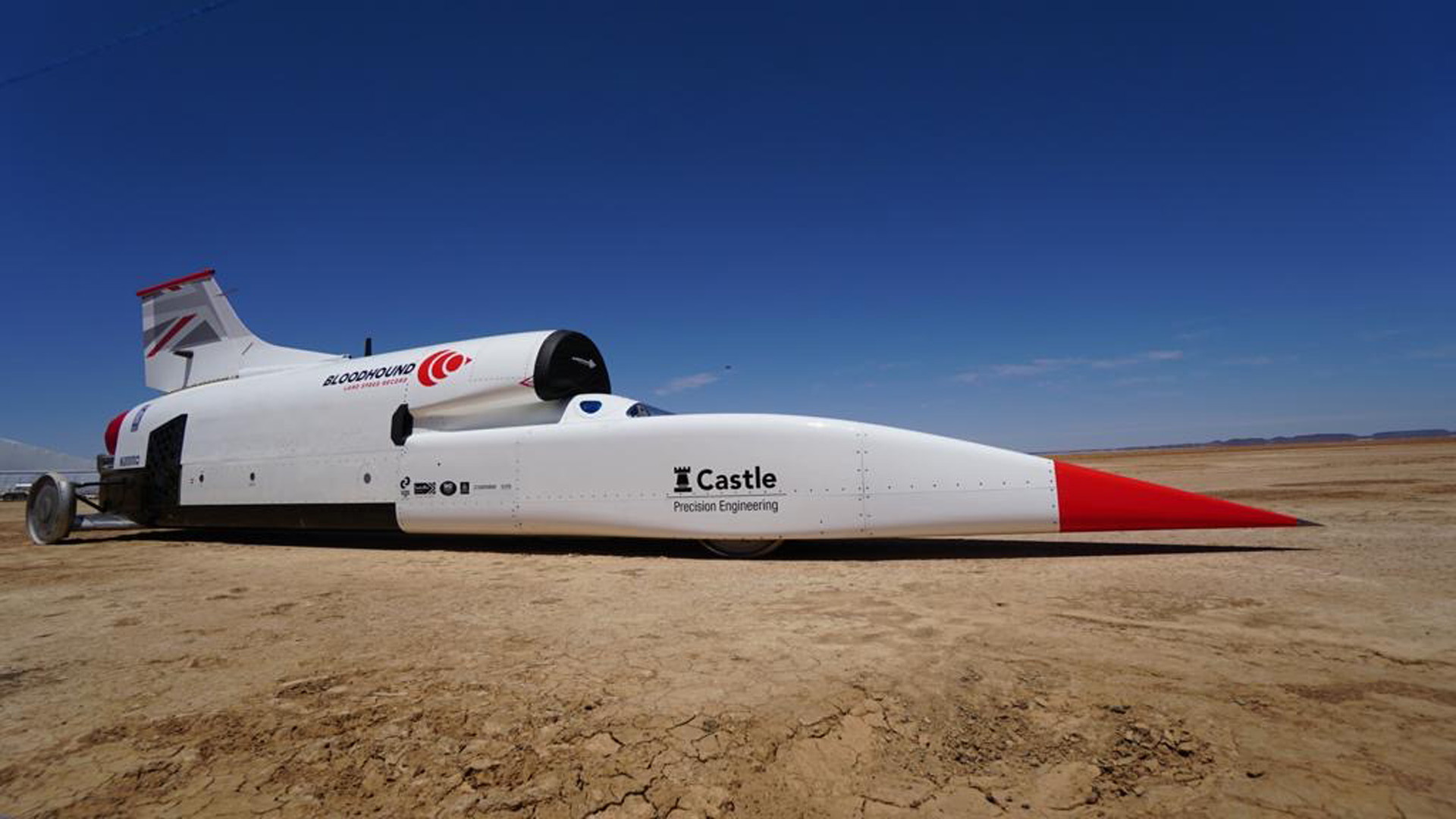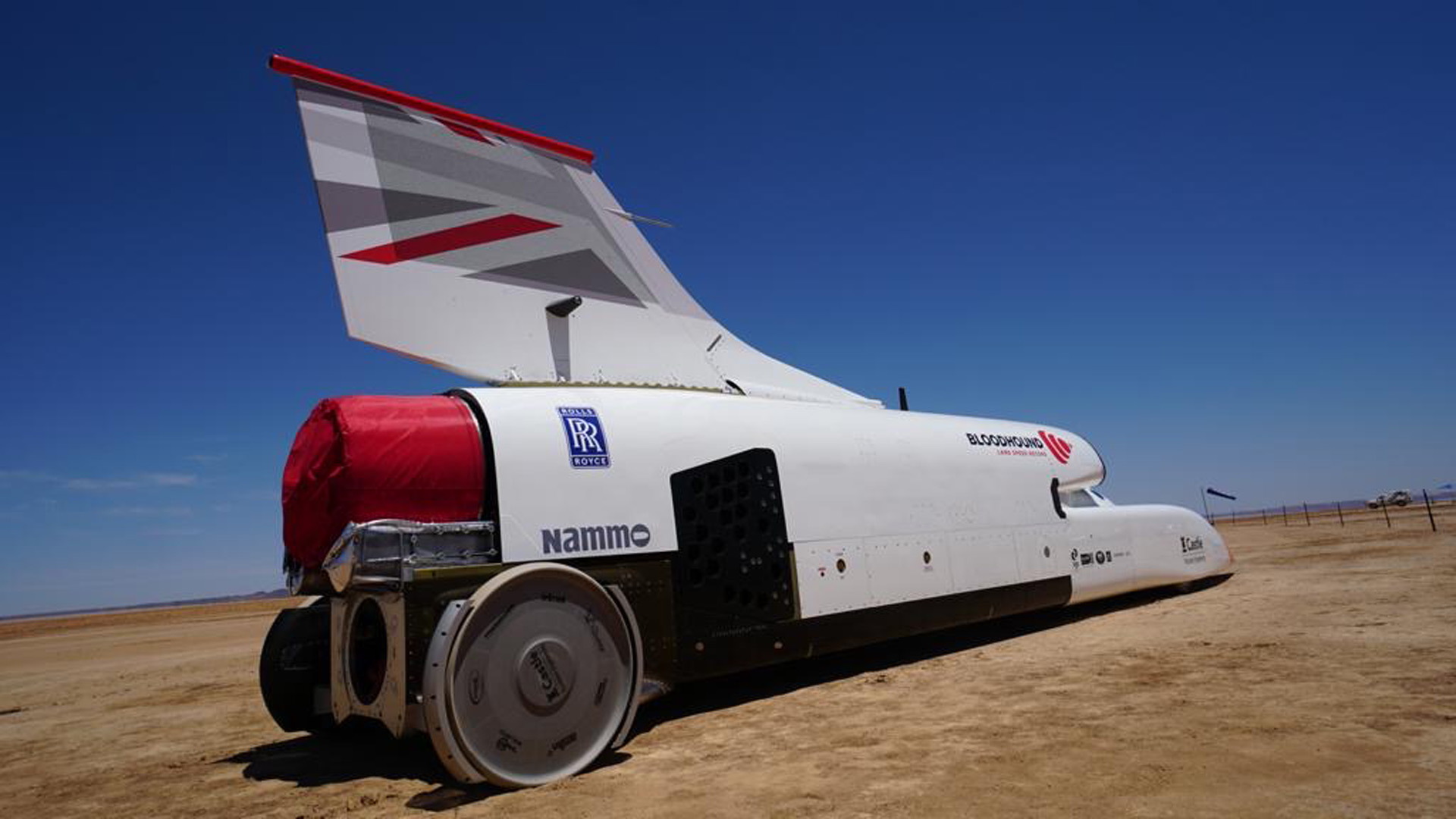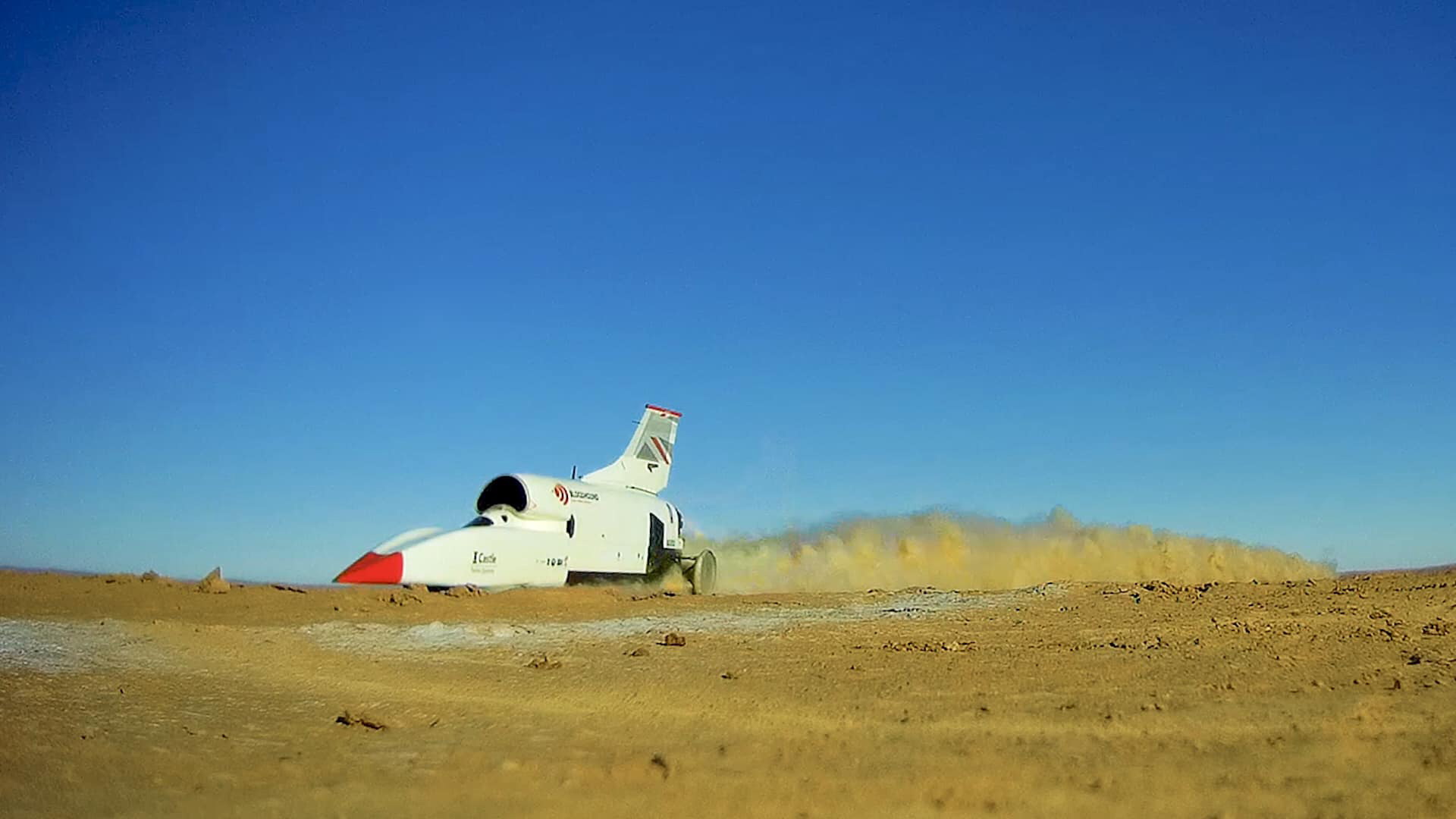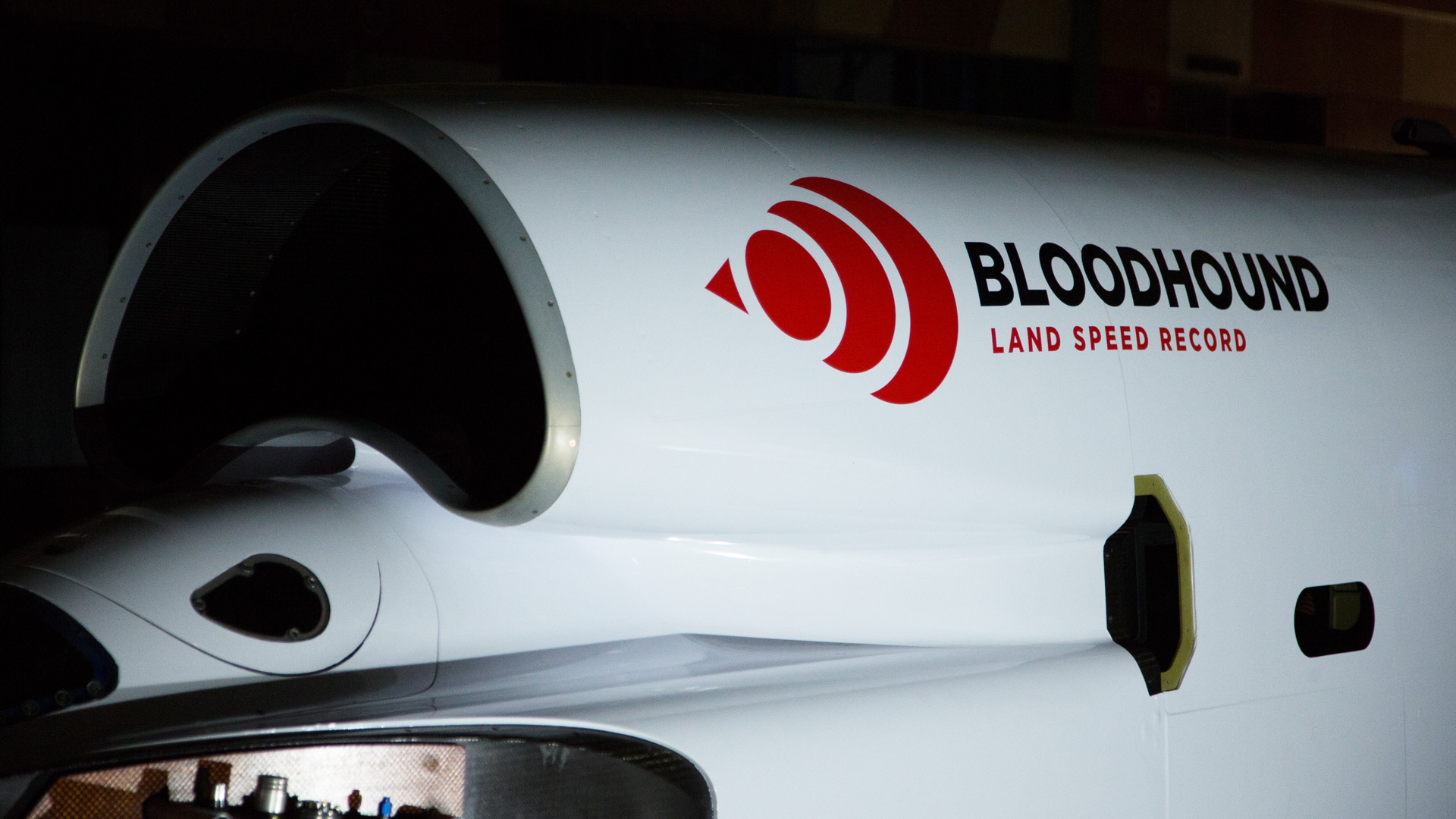There's a team in the U.K. trying to beat the current land speed record for a steerable vehicle of 763 mph, set by local fighter pilot Andy Green all the way back in 1997 in the jet-powered Thrust SSC.
The team is Bloodhound Land Speed Record, and its 44.3-foot supersonic car, packing both jet and rocket power, managed to hit 628 mph during testing in 2019, with Green once again doing the driving.
Bloodhound has been in hibernation since then, as funding dried up at the onset of the pandemic. The project, which started in 2008, isn't quite dead, though a new backer is needed before things can start rolling again. The project's last backer, Ian Warhurst, rescued Bloodhound from oblivion in 2018 after a previous funding shortfall, but he reached his limit in 2021.
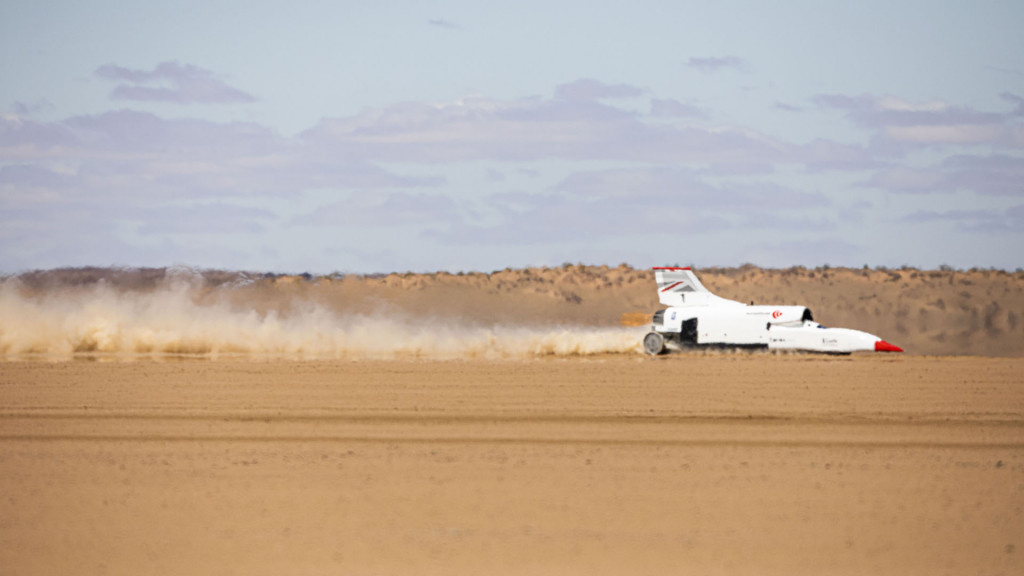
Bloodhound LSR
Speaking with The Sunday Times in an interview published last week, Stuart Edmondson, the current caretaker of the project, and head of engineering operations, said a one-time investment of 10 million British pounds (approximately $12.11 million) is required.
“We don’t need a billionaire, we just need a wealthy investor” he said.
To help attract investors in this new world of ESG (Environmental, Social, and Governance), Edmondson said the plan is to make the project carbon neutral. To achieve this, Bloodhound wants its supersonic car to run on synthetic fuels, or e-fuels. Promising sources for the carbon-neutral fuels include biomass and newer carbon-capture technology.

Bloodhound SSC
Porsche is already testing the waters with carbon capture via a pilot plant in Punta Arenas, Chile. Here, a wind turbine generates electricity that is used to split water into hydrogen and oxygen via electrolysis. The hydrogen is then combined with carbon dioxide from the air to produce synthetic, carbon-neutral methanol. This methanol can then be used to create synthetic versions of gasoline and diesel and also kerosene which is used in aviation.
“This is where I think the planet should go to solve the aviation industry's problem, which is aviation industry cannot replace the jet engines they have in the next 10, 20, 30, 40 years,” Edmondson told The Sunday Times. “Your Airbus 330 is not going to be powered by a different type of engine; the only way you’re going meet your green deadlines is to provide fuel that is net zero.”
In this way, Bloodhound would be living up to one of its original stated goals of serving as a major R&D catalyst and focal point new technology, in addition to generating more interest among students in STEM subjects.
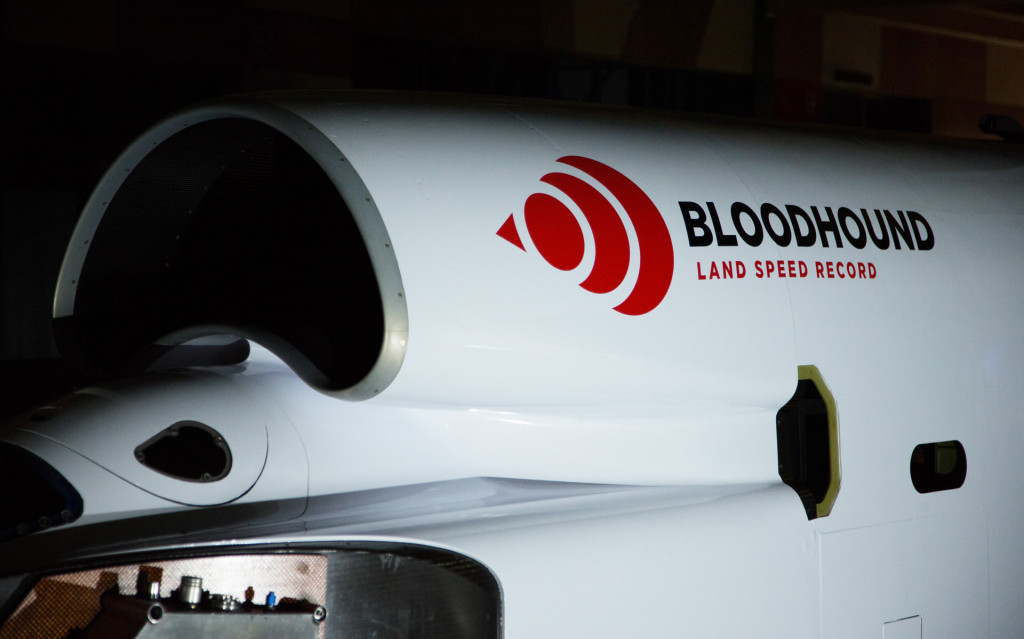
Bloodhound LSR
Of course the main goal remains breaking the land speed record. In his interview, Edmondson said the targeted top speed is still 1,000 mph, though the team will initially chase 850 mph, which would claim the record.
Previous testing, including the run to 628 mph, took place at the Hakskeen Pan salt pan in South Africa. It's likely any further attempts will also take place there.

